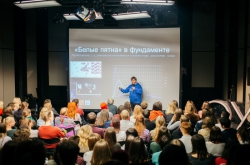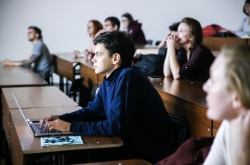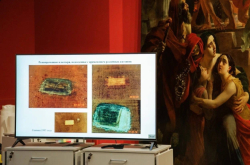The main concept remained the same: the ranking is based on a questionnaire filled in by the universities’ staff. The representatives of Indicator have noted that most universities showed more responsibility when filling in our questionnaire. To learn more about the questions and the universities’ answers, follow this link.
Each segment of the questionnaire can score 0 to 12 points, with a maximum possible score of 195. In the final ranking, universities participating in Project 5-100 were sorted into four categories: universities that scored above 180 points are in the “golden” group, universities with 150 to 180 points are in the “silver” group, the “bronze” group includes universities with 90 to 150 points, while the rest are included in the bottom, fourth group.
ITMO is the only university that has preserved its spot in the top-three. Just like last year, it has only scored a few points below the maximum (193). The second and third places this year are taken by the Moscow Institute of Physics and Technology (192) and the National University of Science and Technology MISiS (187).
“The hardest part is to keep hitting the bar we’ve set. Having to show consistently high results is one of the most ambitious tasks a university or any of its departments may have,” says Anna Veklich, head of the Strategic Communications Department at ITMO, “Russian higher education institutions are becoming increasingly more professional with each year, and ITMO University’s first and foremost goal is to not rest on its laurels and try new formats, setting a higher bar for others and ourselves.”

“The fact that we have some very capable counterparts motivates us to perfect ourselves. In the past year ITMO University, indeed, has been able to significantly increase the number and improve the quality of its scientific news. We’ve launched several popular science projects in formats new for Russia, and each completed project brings forth new ideas that we want to implement. As science communicators, we love to experiment, and so we strive to always be the first to come up with and create something, and that’s what we’ll keep doing,” says Ekaterina Boglaeva, head of ITMO University’s Public Relations Office.
Even though many universities were already familiar with the questions contained in the ranking questionnaire, few had taken efforts to fix their previous weak spots, which is evident in the ranking. Some universities have lost their positions to other who have taken time to improve their performance.
“In general, despite the goals of promoting Russian science abroad, which were set by the 5-100 Russian Academic Excellence Project, it was this aspect where universities’ press services fared the worst. English-language reports or interviews about Russian science are likely the biggest weak spot made evident by the survey,” says Indicator in their commentary for the ranking.
The ranking’s authors have also noted that only about a third of all universities monitor international mass media, a half send out mail to international audiences, and two thirds use aggregators to distribute materials. The situation is better in regards to English-language news services.




